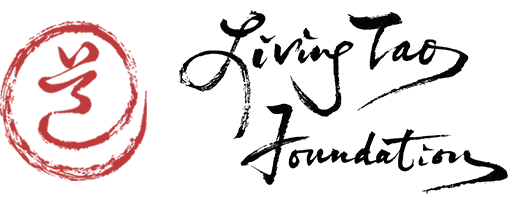Winter 2020 Newsletter
(January 2020)
2020 The year of the Golden Rodent 金鼠

HAPPY CHINESE LUNAR NEW YEAR!
祝福 鼠年快樂 幸福吉祥 萬事如意!
Chinese New Lunar Year of 鼠TSWOO (in my book) or 鼠 🐭 SHU (the Pinyin), is commencing on January 25th, 2020. We will return to behold “A Sense of Wonder” with the “Beginner’s Mind” once again at the start of another new round of the 12 Animal Powers Cycle in the Chinese Zodiac. The bright and smart rodent creature 鼠with enormous curiosity about life’s learning is once again at the feet of Laotze or the Buddha absorbing Wise Teaching. Once again, we shall rethink and review the meaning of “Small is Beautiful”, “Less is More” digesting quality bites to savor the true taste of living, wisely without any need to hoard and accumulate quantity. instead, through Childlike Wonderment, we take our time to build our mountain from the small earthly mount to rest securely as our true base. Learn to Embrace the “Tiger” (Our Life So Far), to return solidly to our current Magical “Mountain” Top, happily landing to being Truly ALIVE!
At the beginning of every New Year, I count my blessings to have the privilege and joy to continue sharing my perpetual and perennial learning with my International Living Tao/Lan Ting Tai Ji family. As I humbly accept my age and gradually learn to limit my exposure to attract new members, we are counting on our faithful friends, consistently present with their participation and annual support. We will now focus on intensive studies with smaller CORE groups at our Winter and Summer River House programs, to be supplemented with the 9-day intensive in Winterthur, Switzerland during Easter Week; and other introduction and refresher courses in the Midwest during Memorial Day Week in Urbana, Illinois and, at Esalen Institute Autumn week around Thanksgiving time in Big Sur, California.
In 2020 we will return to Wu Yi Mountain in China, our base since 1984, for another Lan Ting Institute study trip beginning October 9th for 3 to 4 weeks.
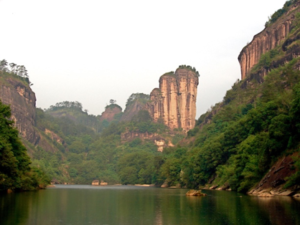
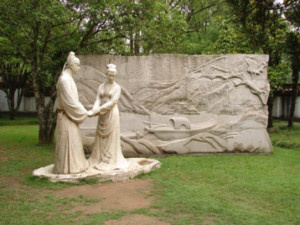
More than ever, being there in person with the Chinese people will prove to be the most necessary and effective way to counterbalance the mutually biased perceptions of the “West vs. China” dilemma. I am certain that all those who have been to China with me will agree that once there, we immediately transcend the ideological, political and trade war conflicts that undermine our hope for peace and harmony among all powerful nations in the world.
We need to avert the tendency of creating “The Face of the Enemy” in the never-ending power struggles, and to look at the possibility of better understanding and mutual cooperation to make the World a Better Place for All Humankind. 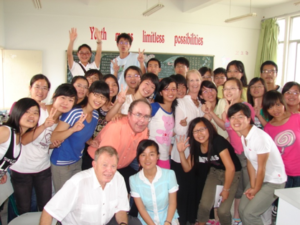
Citizens’ diplomacy with first-hand “people to people” encounters is the Key to opening doors to this potential for success.We must all commit ourselves with genuine heart-full openness to join all conscious citizens of the world for this task without any prejudice or reservations. Going to Lan Ting Institute in China will always be a commitment for me and for all our faithful long-time international Tai Ji family friends.
If you are interested to join us this autumn, please let me and Gitta Legler, who has been our Lan Ting China leader/organizer for the past decades, know right way. So that we may count you in and send you more detailed itinerary with proposed programs.

You may also discover that we have a newly designed Living Tao website. I wish to express my heartfelt appreciation to my daughter Tysan Dutta who took on this major task, with the guiding support from Lisbeth Bagnold, and Beat Städeli and René Obi in Switzerland who, with Barbara Willi, designed and maintained our previous website so ably.
For Christmas Suzanne and I spent the holidays with both daughters and family in Seattle, and now have been enjoying some quiet at home time in Illinois. I will soon go to Evergreen College to resume our annual weekend gathering, then to Gold Beach to welcome many old friends back to our annual Winter Seminar at the River House.
Right after that I will be fully engaged in the preparation for the March 28th performance of Gustav Mahler’s “Das Lied von der Erde”* back in Urbana. Then, immediately, I will be off to Europe for the Easter Week teaching in Winterthur (see the calendar listings on our website).
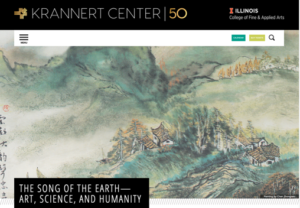 Composer Gustav Mahler wrote Das Lied von der Erde(The Song of the Earth) near the end of his life and in fact never heard it performed. Inspired by Chinese poetry of the seventh and eighth century and written for vocalists with orchestra, the work delves into themes of life and eternity and is considered iconic in the Western classical music canon. This evening—in collaboration with the Illinois Emerging Digital Research and Education in Arts Medi (eDream) Institute and the Carl R. Woese Institute for Genomic Biology—musical moments will be woven together with big science presentations by distinguished faculty, followed by a unique rendering of Mahler’s masterpiece enhanced by imagery and movement conceived by Tai Ji master Chungliang Al Huang. Performers will include baritone Nathan Gunn and pianist Julie Gunn.
Composer Gustav Mahler wrote Das Lied von der Erde(The Song of the Earth) near the end of his life and in fact never heard it performed. Inspired by Chinese poetry of the seventh and eighth century and written for vocalists with orchestra, the work delves into themes of life and eternity and is considered iconic in the Western classical music canon. This evening—in collaboration with the Illinois Emerging Digital Research and Education in Arts Medi (eDream) Institute and the Carl R. Woese Institute for Genomic Biology—musical moments will be woven together with big science presentations by distinguished faculty, followed by a unique rendering of Mahler’s masterpiece enhanced by imagery and movement conceived by Tai Ji master Chungliang Al Huang. Performers will include baritone Nathan Gunn and pianist Julie Gunn.
More to follow soon,
![]()
**Here is a draft of the program note—Wish all of you could be in the audience!
It was autumn of 1908 when Gustav Mahler wrote to his friend Bruno Walter to tell him about his hard work on Das Lied von der Erde, “the most personal thing I have done so far.” Mahler was inspired by Hans Bethge’s Die Chinesische Flote, adaptations of eighth-century Chinese poems based on German, French, and English translations. Mahler completed the work around September of 1908. The first performance was conducted by Bruno Walter in Munich on November 20, 1911, six months after Mahler’s death.
For Mahler scholars and admirers, this is generally regarded as one of his most important works, a masterpiece which is, unfortunately, seldom performed due to its intrinsic puzzlement of form and structure. Some consider it a “symphony with songs”, others consider it a “song cycle” for two vocal soloists (tenor, and mezzo soprano or baritone) with full or chamber orchestra or piano.
It took almost 90 years after its completion for Das Lied von der Erde to receive its Chinese premiere in May 1998, when a German symphony orchestra and vocalists paid a visit to Beijing. This historic performance provoked great attention amongst the general public and attracted the interest of Chinese scholars and arts enthusiasts; it also initiated research into the sources of the original Chinese poems that inspired Mahler’s masterpiece. Most of the original Tang Dynasty poems have been identified and the discussion and investigation of all the missing links are still ongoing.
Although Gustav Mahler had never been to China, nor was he familiar with Chinese poetry and music, he was the first influential Western composer to use ancient Chinese poems as texts for this epoch-making symphonic composition. Personal history of Mahler tells us that these Chinese poems with their various moods—joy and despair, youth and beauty, misfortune and loneliness, gathering and parting—provided him comfort at a time of personal challenge. Mahler’s resignation from the Vienna Opera, the death of his beloved eldest daughter, and his own ill health had combined to make him acutely aware of his own mortality; the Chinese poems led him to universal transcendence of Eternal Bliss!
From existential to spiritual, Mahler freely adapted all the influences from the Orient to break the boundaries of the traditional symphony and to initiate new methods of symphonic composition. This masterpiece fuses many opposite yet related concepts—a Yin/Yang Tai Ji circular dance of East and West, ancient and modern, sadness and joy, life and death, union and separation, dream and reality, poetry and music, instruments and voice—to openly and creatively explore as a composer and poet, and mainly as a person, the “Mensch,” Mahler, the mortal human.
To celebrate Krannert Center’s 50th anniversary, director Mike Ross, with the support of Chungliang Al Huang—who has been associated with the Center since its opening in 1969—jointly envisioned a staged production of this masterwork, for the first time ever with its Chinese sources of poetic essence, enhanced by the aesthetics of Chinese art, calligraphy, and Tai Ji movement, and to fortify it with new dimensions of curated “Science Talks,” offering an amalgamation of Universality for a spiritual transcendence of this magical ART of Music, Poetry and Dance.
